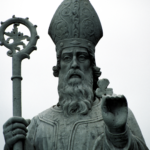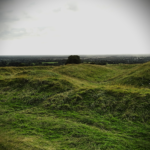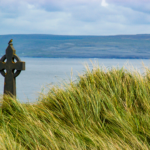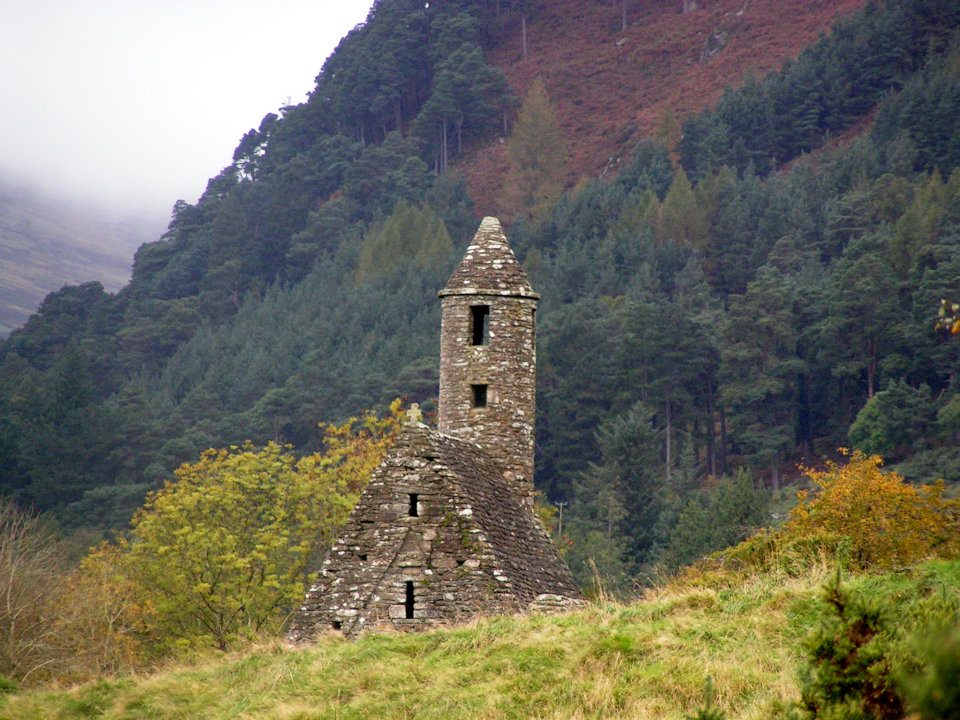 Today is St. Patrick’s Day, and I am wearing my green. Usually, I eat corned beef and cabbage while enjoying a Guinness. However, I am going out with friends today to celebrate the winter beer, bock bier, here in Germany. I wonder if they will have corned beef on the menu.
Today is St. Patrick’s Day, and I am wearing my green. Usually, I eat corned beef and cabbage while enjoying a Guinness. However, I am going out with friends today to celebrate the winter beer, bock bier, here in Germany. I wonder if they will have corned beef on the menu.
So who was St. Patrick? And why do we celebrate his feast day? Ireland actually has three patron saints, and he sits alongside St. Brigid and St. Columba. People claim Patrick brought Christianity to the pagan Irish. However, he was not the first to preach the message to them. That was Palladius. But Patrick was undoubtedly the most popular.
 Accounts of his birth vary, but Patricius was not Irish. He was born in Roman Britain in the late 4th century, most likely around 385. His father, Calpornius, was a converted Christian who served as a deacon and was the local tax collector. According to Partricius’ account in his Confessio, he was taken by Irish marauders when he was sixteen years old. Later sold to a Celtic priest, some say local chieftain, he spent six years tending sheep on the moors. As a youth, he’d given little thought to his parent’s religion, and it was during this time of solitude and isolation that he began to pray.
Accounts of his birth vary, but Patricius was not Irish. He was born in Roman Britain in the late 4th century, most likely around 385. His father, Calpornius, was a converted Christian who served as a deacon and was the local tax collector. According to Partricius’ account in his Confessio, he was taken by Irish marauders when he was sixteen years old. Later sold to a Celtic priest, some say local chieftain, he spent six years tending sheep on the moors. As a youth, he’d given little thought to his parent’s religion, and it was during this time of solitude and isolation that he began to pray.
According to his writings, in the sixth year of his captivity, he heard a voice telling him his ship was ready. It was time to go home. Patrick fled and trudged over 200 miles. As a runaway slave, he hid when others were near. Eventually, he reached the coast, most likely Wexford, where a ship’s captain reluctantly allowed him to come aboard. Accounts differ here on whether the sailors accompanied him overland or he finished his trek alone. But eventually, he reached his former home. Hardened by the life he’d led, showing signs of physical and psychological damage, he did not fit in anymore. He was well behind his peers and not the carefree teenager he’d been before.
Once again, he heard a voice, this time accompanied by the vision of a man who handed him a letter. He read the words encouraging him to return and help the Irish. It was then that Patrick claimed he awoke. Despite the protests of his family, Patrick left for Gaul, where he studied for eighteen years and was ordained a priest and later a bishop in Auxerre.
 Finally following his vision, between 430-432, Patrick sailed for Ireland, most likely to County Wicklow. The people hardly welcomed him with open arms, and his life as a foreigner would have been difficult. His Christian beliefs forbade him from accepting the chieftains’ traditional gifts, placing him outside their protection. He was occasionally robbed and beaten. Run-ins with Druid priests added to his difficulties, and he made his way north toward Tara.
Finally following his vision, between 430-432, Patrick sailed for Ireland, most likely to County Wicklow. The people hardly welcomed him with open arms, and his life as a foreigner would have been difficult. His Christian beliefs forbade him from accepting the chieftains’ traditional gifts, placing him outside their protection. He was occasionally robbed and beaten. Run-ins with Druid priests added to his difficulties, and he made his way north toward Tara.
Patrick arrived in time for the festival of Ostara. The High King had decreed no fires should be lit before the great bonfire on the Hill of Tara. Patrick and his small gathering of followers climbed the Hill of Slane, directly opposite, and lit a fire there. When the king saw the flames, he sent his soldiers to put them out. No matter how they tried, they could not extinguish them and brought Patrick and his followers before the king. Once inside, Patrick defeated the Druids in a debate that allowed him to preach within the castle’s confines. While the king did not convert, his queen and many of his court did.
 Patrick knew their language from his time there as a shepherd. He also understood their beliefs. He often used these to aid in explaining Christianity. Sources claim that he used the ‘sacred’ shamrock, with its three-leaf structure, to explain the Trinity of the Father-Son-Holy Ghost. However, there is no evidence that this happened, nor was the shamrock considered sacred at the time. Besides that, the Celtic Irish had numerous examples of triple gods and goddesses for him to draw upon, such as Eriu, Fodla, and Banba, the ancient goddesses who gave Ireland its name. They also recognized the triple goddess of the maiden-mother-crone. Patrick would have understood this and been more likely to use these examples over the shamrock.
Patrick knew their language from his time there as a shepherd. He also understood their beliefs. He often used these to aid in explaining Christianity. Sources claim that he used the ‘sacred’ shamrock, with its three-leaf structure, to explain the Trinity of the Father-Son-Holy Ghost. However, there is no evidence that this happened, nor was the shamrock considered sacred at the time. Besides that, the Celtic Irish had numerous examples of triple gods and goddesses for him to draw upon, such as Eriu, Fodla, and Banba, the ancient goddesses who gave Ireland its name. They also recognized the triple goddess of the maiden-mother-crone. Patrick would have understood this and been more likely to use these examples over the shamrock.
For over thirty years, Patrick preached throughout Ireland. He succeeded by showing respect for the people and their culture, thereby gaining their trust. He established monasteries throughout the country emphasizing education, literacy, spirituality, and the dignity of the individual. In this way, his Celtic church differed from the church in Rome.
Depending on which sources you consult, Patrick died on 17 March, sometime between 457 and 492. The latter date would put him close to 120 years old. Patrick was never canonized since that process did not exist during his lifetime. The first canonization was St. Ulrich, bishop of Germany, in 993, five hundred years after Patrick’s death.
 However, to this day, he’s venerated among the saints. His love of the Irish people was sincere. In all his writings, he expressed the desire to help them, to create a better life for all. He showed particular care concerning women, which was absent in the teachings of others. Patrick founded monasteries to foster learning. And when Rome fell, these institutions continued to encourage literacy and preserved Western thought and writing.
However, to this day, he’s venerated among the saints. His love of the Irish people was sincere. In all his writings, he expressed the desire to help them, to create a better life for all. He showed particular care concerning women, which was absent in the teachings of others. Patrick founded monasteries to foster learning. And when Rome fell, these institutions continued to encourage literacy and preserved Western thought and writing.
The Irish diaspora has spread worldwide. You find immigrants almost everywhere, as there are over 75 million people across the globe who claim Irish heritage. Today is a celebration of their culture and their contributions to the world. So, join in the fun; as they say, everyone’s a little bit Irish today.
